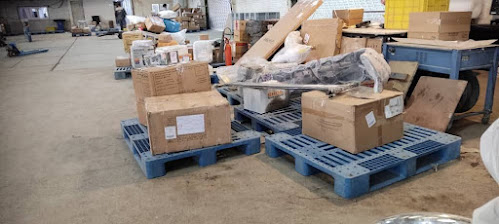
What is the most important difference between plastic pallets and wooden pallets? The most significant difference between plastic and wooden pallets lies in their inherent material properties, leading to variations in durability, hygiene, and longevity. Here's a breakdown: Hygiene and Durability: Plastic pallet s, being non-porous, are significantly more hygienic. They resist moisture, bacteria, and pests, making them ideal for industries with strict sanitation standards like food and pharmaceuticals. Wooden pallets, conversely, are porous and susceptible to contamination, mold, and insect infestations. They are also prone to splintering and breakage. Plastic pallets generaly have a much longer lifespan than wooden pallets. Longevity and Maintenance: Plastic pallets generally outlast wooden pallets due to their resistance to environmental factors and physical wear. Wooden pallets require more frequent repairs and replacements. Environmental Impact: Plastic pallets ...










